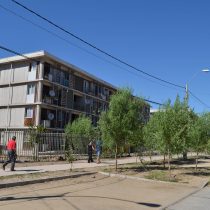
In the last time there has been an interesting discussion about the price of housing in Chile, with various sources indicating that it has increased its price beyond what has increased the income of households, which can trigger a housing crisis of proportions.
The average price of housing in Santiago has grown twice as much as the average household income has, which would indicate that there is some element that is producing this exaggerated increase, which has been sought to identify from different sectors, both academic and from industry. There could be both signs of speculation, a housing bubble, lack of supply, over-supply, among other elements.
It is always important to ensure that the conditions for affordable housing for households are met, but trends need to be correctly read to identify likely causes and effects of this phenomenon, and thus move towards policies that really help those most affected.
That is why it is valid to ask, has the price of housing really increased above income? We think the answer is No. The problem is that the discussion has focused on the relationship between two variables (price and income) that cannot be directly compared. To analyze whether a household’s income allows a certain home price to be paid, it is necessary to consider the mortgage interest rate, as much of the home purchases involve a bank credit.
While average household income has risen by around 33% between 2010 and 2017, the amount of credit that the average household can access has grown by 67%, as mortgage rates have fallen from 4.2 to 3.4% in that period (this is a simple exercise simulating a 25-year credit). According to this, purchasing capacity has risen in the same way as house prices (71% according to the Central Bank, 2017).
Considering this criterion, not only is there no decoupling between income and housing, but it also emerges as a possible explanation of the rising house price (if households have more available amount for housing spending, the market tends to raise prices). International evidence indicates that declining mortgage rates lead to an increase in house prices. The interesting thing is that this also explains why the price of the leases has gone up less than the sale price (the relationship between lease price and income is direct: both are flow type, as opposed to the price that is of stock type).
However, this does not mean being optimistic. For those with access to credit (so far a large proportion, considering that the penetration of the financial market into the housing market has been high), access to housing appears not to be affected by this price hike.
The focus should be on those aspects of home purchase that have not benefited from low rates: social housing subsidies and the foot for credit. With prices increasing, the proportion of the price covered by subsidies is dinger and lower.
On the other hand the foot, which is not covered by credit and therefore does not benefit from low rates, is increasing.
Because social housing in Chile is produced as part of the same market as other homes, price increases are reflected in social housing. The market is dominated by those with access to credit, and options for those with a subsidy are increasingly limited, relegating this type of housing to increasingly lower located land. If there is a possible housing crisis on the horizon, it will come once again for lower-income groups, which is already manifested in the explosive resurgence of camps.
Moreover, considering the urban emergencies to be resolved by socio-judicial segregation, overcrowding and pandemic mobility, ultimately a new and improved opportunity for urban quality of life, it seems important to firmly incorporate into these considerations the use of well-placed public land for these purposes, achieving synergy for the State and the actions that can be carried out with public and private bodies , including non-profit real estate proposed by the National Council for Urban Development and the experiences of municipal housing for rent.
In conclusion, the price hike we have seen over the past decade was expected, but the focus should to generate urban policies that adequately protect the submarket of subsidized housing with respect to the side effects that this increased availability of credit for the purchase of market housing can generate.
The content poured into this opinion column is the sole responsibility of its author, and does not necessarily reflect the editorial line or position of El Mostrador.





